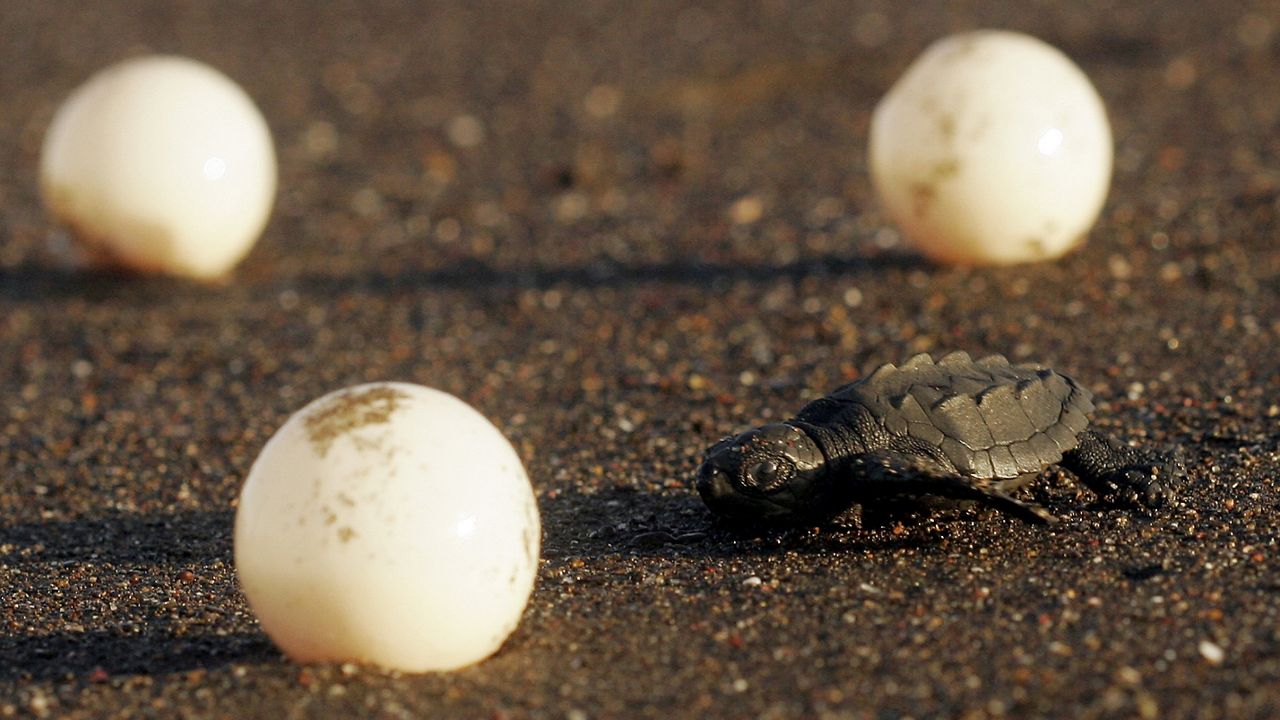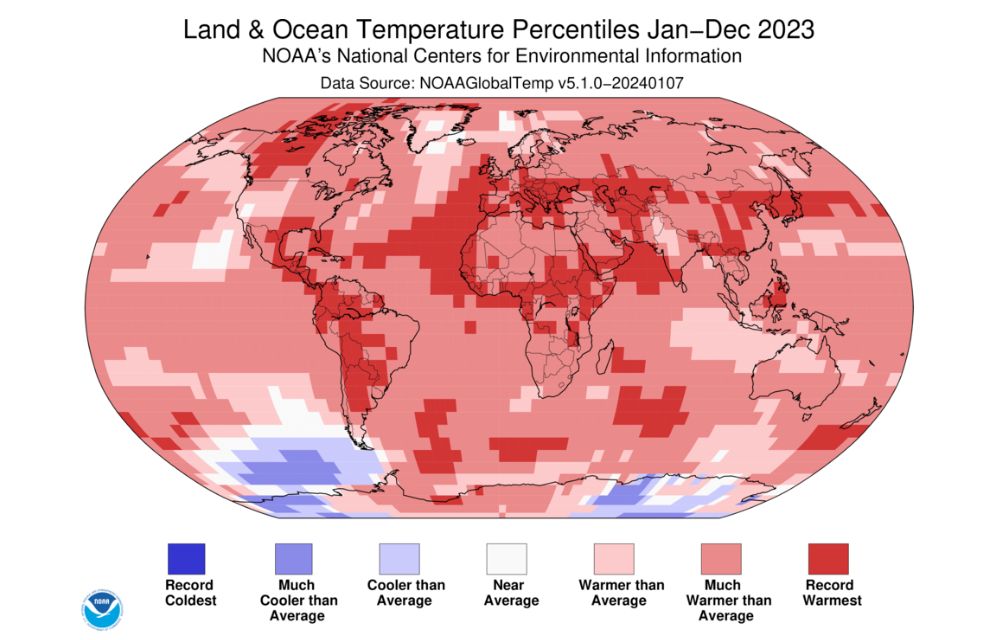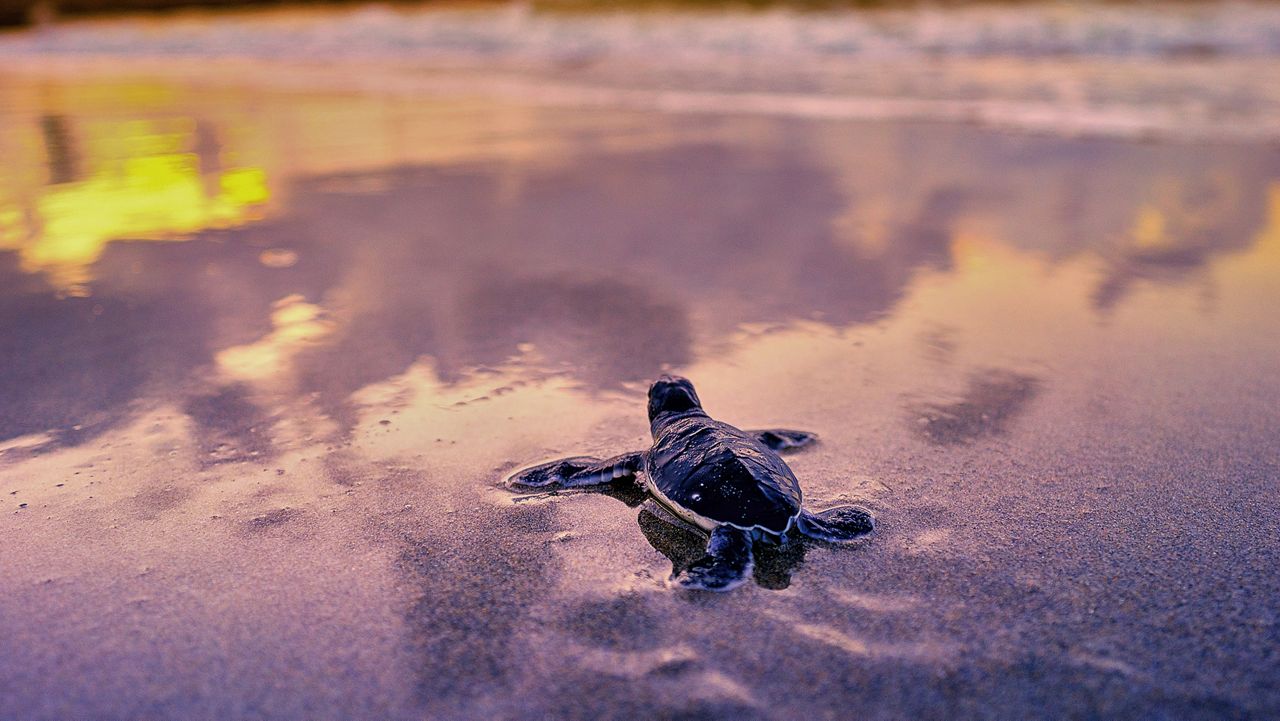Few species have their sex determined by temperatures, but for sea turtles it's almost a certainty.
However, this natural occurrence could become a biological disadvantage as global temperatures continue to rise, leading to larger gender disparities.
The differences in reproduction between humans and sea turtles extend beyond the obvious 'one lays eggs while the other does not.' One key difference between the two is how sex is determined.
For humans and many other species, gender is determined from the by sex chromosomes when fertilization occurs. But this is not the case with sea turtles and other reptiles, given that they lack sex chromosomes.
For them, the gender of their offspring is determined after fertilization, and the deciding factor all depends on temperature. This kind of sexual determination is called temperature-dependent sex determination (TSD).
Building their nest onshore, a female will lay their eggs in the sand, where they will continue to develop before hatching about two months later.

Higher temperatures stimulate more aromatase activity. This yields an increase in female hormones and thus, the baby sea turtle will hatch as a female.
On the contrary, cooler temperatures limits aromatase activity. This promotes male hormones to dominate, and so the sea turtles that hatch will be male.

According to NOAA, sand temperatures of 88.8 degrees or more will yield female sea turtles, while sand temperatures of 81.86 degrees or less will produce males.
Eggs incubated in sand temperatures falling between these two thresholds will cause a mix of male and female sea turtles.
Following the world's warmest year on record in 2023, rising global temperatures will likely upset gender diversity within sea turtle populations in the years to come.

Researchers from Florida Atlantic University Marine Lab announced warmer nest temperatures in recent years have produced more female hatchlings, some years even recorded no male offspring at all.
As the male sea turtle populations continue to decrease, growing disparities in gender could ultimately endanger the species' existence in the future.
Our team of meteorologists dives deep into the science of weather and breaks down timely weather data and information. To view more weather and climate stories, check out our weather blogs section.
Shawnie Caslin - Digital Meteorologist
Shawnie joined Spectrum News as a Digital Meteorologist in 2021. After discovering her love for weather as a child, she earned a Bachelor's of Science in Meteorology from Rutgers University in 2015. Prior to joining Spectrum, Shawnie worked behind the scenes at local and national networks as a meteorologist and weather graphics producer in New York City. She thoroughly enjoys working in the media and is always passionate to explore the different ways weather impacts our everyday lives.








